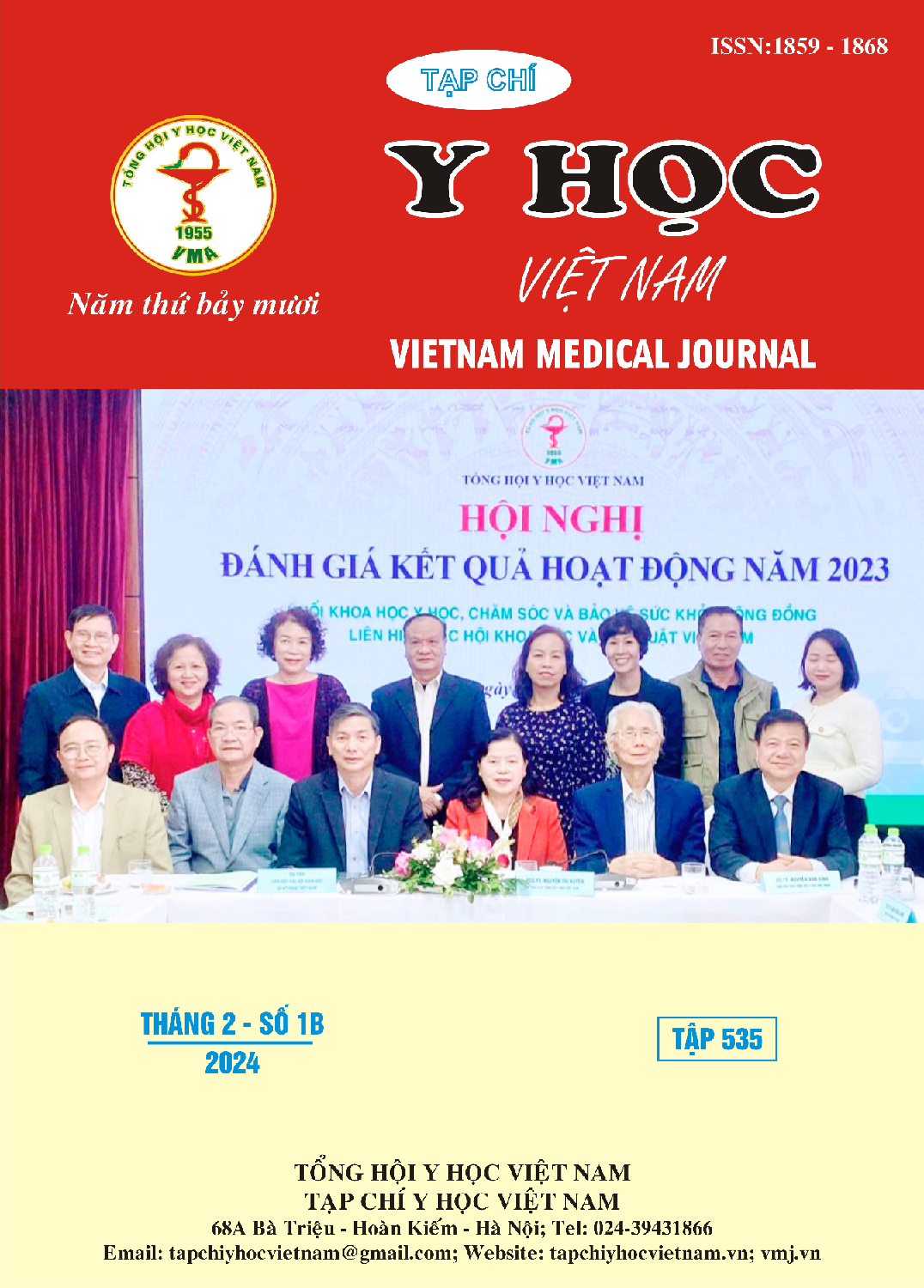NHIỄM NẤM NÔNG Ở TỔN THƯƠNG DA CỦA BỆNH NHÂN VẢY NẾN TẠI BỆNH VIỆN DA LIỄU TRUNG ƯƠNG
Nội dung chính của bài viết
Tóm tắt
Mục tiêu: Khảo sát tình trạng nhiễm nấm nông trên tổn thương da của bệnh nhân vảy nến tại Bệnh viện Da liễu Trung ương từ tháng 1/2016 - 12/2019. Phương pháp nghiên cứu: mô tả cắt ngang trên các bệnh nhân được chẩn đoán xác định vảy nến và được thực hiện xét nghiệm soi trực tiếp tìm nấm. Kết quả: Tỉ lệ nhiễm nấm nông trên da của bệnh nhân vảy nến là 9,4%, không có sự khác biệt về tuổi, giới giữa nhóm có nhiễm nấm và không nhiễm nấm. Nấm Dermatophytes thường gặp với tỉ lệ 42%, tiếp theo là nấm Malassezia 34,9% và nấm Candida chiếm tỉ lệ thấp nhất 23,1%. Tỉ lệ nhiễm nấm Malassezia ở thể thông thường cao hơn so với các nhóm còn lại với p<0,05. Tỉ lệ nhiễm nấm Dermatophytes ở thể mủ cao hơn so với các nhóm còn lại với p<0,05. Nhiễm nấm Candida gặp ở tất cả các thể lâm sàng. Kết luận: Nhiễm nấm nông trên tổn thương da của bệnh nhân vảy nến thường gặp, chủ yếu do nấm Dermatophytes, nấm Malassezia và nấm Candida.
Chi tiết bài viết
Từ khóa
nấm nông, vảy nến
Tài liệu tham khảo
2. Lowes M.A., Russell C.B., Martin D.A. et al (2013). The IL-23/T17 pathogenic axis in psoriasis is amplified by keratinocyte responses. Trends Immunol, 34(4), 174-181.
3. Kamiya K., Kishimoto M., Sugai J. et al (2019). Risk factors for the development of psoriasis. International Journal of Molecular Sciences, 20(18), 4347.
4. Chadeganipour M., Shadzi S., Mohammadi R. (2021). Fungal infections among psoriatic patients: etiologic agents, comorbidities, and vulnerable population. Autoimmune Diseases, 2021,
5. Pietrzak A., Grywalska E., Socha M. et al (2018). Prevalence and Possible Role of Candida Species in Patients with Psoriasis: A Systematic Review and Meta-Analysis. Mediators Inflamm, 2018, 9602362.
6. Sparber F., Ruchti F., LeibundGut-Landmann S. (2020). Host immunity to Malassezia in health and disease. Frontiers in cellular and infection microbiology, 10, 198.
7. Sepahi S., Riahi-Zanjani B., Ghorani-Azam A. (2016). The role of Candida albicans in the pathogenesis of psoriasis vulgaris: a systematic literature review. Reviews in Clinical Medicine, 3(3), 122-127.
8. Papini M., Natalini Y. (2018). Candida infections in psoriatic patients on anti-IL17 therapy: a case series. Journal of Dermatological Treatment, 29(sup2), 3-4.
9. Rudramurthy S.M., Honnavar P., Chakrabarti A. et al (2014). Association of Malassezia species with psoriatic lesions. Mycoses, 57(8), 483-488.
10. Kyriakou A., Zagalioti S.-C., Trakatelli M.-G. et al (2022). Fungal Infections and Nail Psoriasis: An Update. Journal of Fungi, 8(2), 154.


